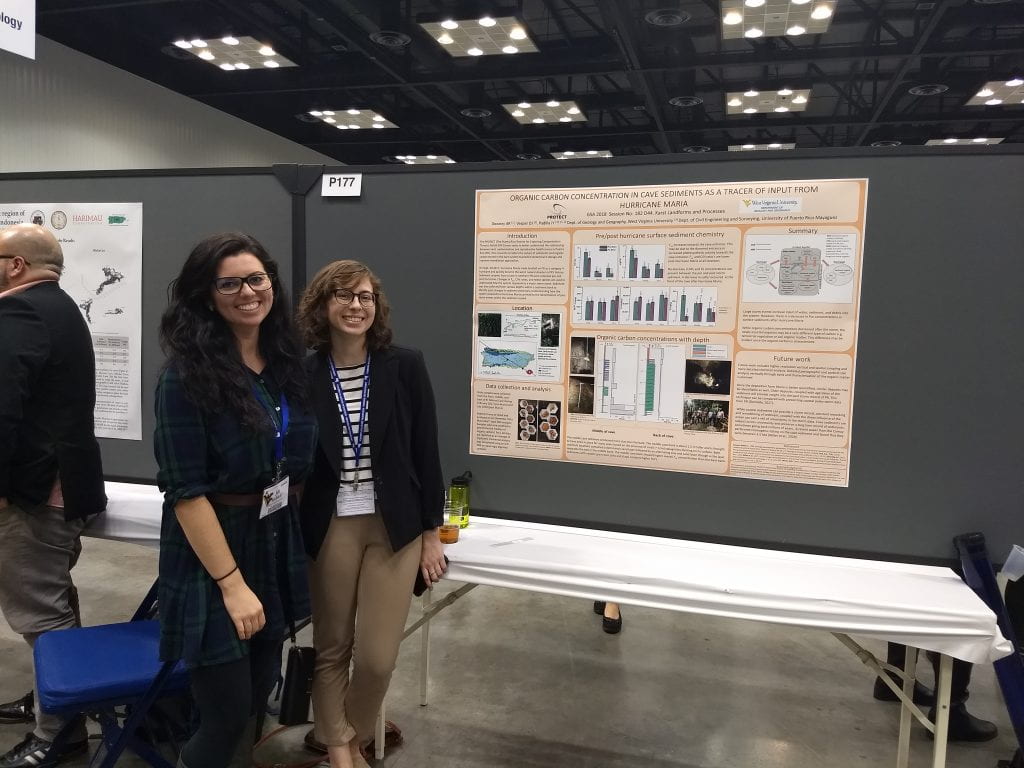PROTECT Project 4 Trainees Autum Downey & Jill Riddell Present at the Geological Society of America 130th Annual Meeting
PROTECT Project 4 team members recently presented study findings that organic carbon concentration in cave sediments can be used as tracer of input from Hurricane Maria and other Natural Disasters at a recent geological researcher’s conference in Indianapolis, Indiana. On Tuesday, November 6th, PROTECT Trainees Autum Downey and Jill Riddell presented a poster with these findings at the Geological Society of America (GSA) 130th Annual Meeting, under the direction of PROTECT Researcher and GSA Fellow Dorothy Vesper.
GSA is an international meeting and the largest professional conference in the field, in which thousands of geologists come together to discuss their research and ideas both formally and colloquially through oral and poster presentations, networking events, seminars, and field trips.
Autum is a first year master’s student in Geology at West Virginia University wh ose master’s research pertains to understanding and characterizing sediment organics within a karst system. Autum has participated as a PROTECT Trainee under Project 4 since February 2018. She presented some preliminary data from her July sampling trip to Puerto Rico earlier this year at the Geological Society of America’s Annual Meeting via Poster Presentation. The data analyzed were collected from a single cave near Arecibo, Puerto Rico and the presented data considers the chemical changes occurring within the surface sediments of the cave before and after Hurricane Maria. Interestingly, the data show that organic carbon decreased within the surface sediments after Hurricane Maria, while other ion concentrations remained unaffected. The chemistry was then analyzed with depth through sediment banks within the cave, and organic carbon concentrations were found to be highest within the clay layers. Spatially, the middle of the cave contained higher overall organic concentrations than the back of the cave. For more technical information please refer to the poster below.
This research plays into the larger goal of PROTECT Project 4 by attempting to quantify the potential for organic carbon, including contaminants, and storage within the conduit system. There have been extensive studies focusing on the organic carbon dynamics within the water column and which have largely ignored the potential for storage within the clastic sediments that are almost ubiquitous throughout karst systems.

